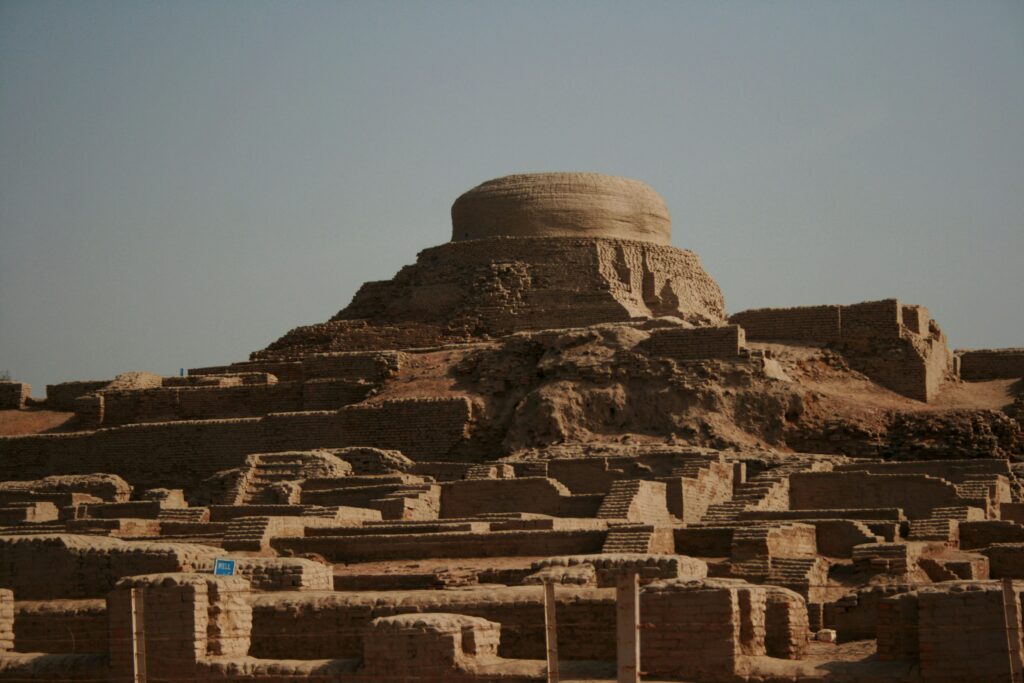Climate change poses unprecedented threats to cultural heritage sites worldwide, particularly those near water bodies or in flood-prone areas. Rising sea levels, increased flooding, and severe droughts are endangering irreplaceable historical and cultural landmarks.

Mohenjo-daro: Protecting Ancient Ruins from Flood and Salt
The ancient Indus Valley city of Mohenjo-daro in Pakistan faces dual threats from flooding and salt encrustation. In response to these challenges, conservationists have implemented several protective measures. Firstly, they have installed improved drainage systems to mitigate flood damage. Additionally, they have applied mud slurry to the walls to prevent salt damage. Consequently, these actions highlight the critical need for ongoing, adaptive management strategies for heritage sites. Furthermore, the situation at Mohenjo-daro serves as a prime example of the complex challenges that ancient sites encounter in the face of environmental threats.
Mohenjo-daro, known as the “City of Mounds,” stands as a remarkable archaeological site in Sindh, Pakistan. Built around 2500 BCE, it served as a major urban center of the Indus Civilization. The site showcases sophisticated urban planning, evident in its grid-like street layout and advanced drainage systems. Situated on the banks of the Indus River, Mohenjo-daro continues to intrigue archaeologists and historians with its mysterious past and impressive architectural achievements.
Venice: A City Under Siege
Venice, with its unique architecture and rich history, faces existential threats from rising sea levels and more frequent flooding. The MOSE project, a system of mobile gates designed to protect the city from high tides, represents a large-scale engineering solution to this challenge. However, it also raises questions about the long-term sustainability of such interventions.
Angkor: Managing Water in a Changing Climate
The temples of Angkor in Cambodia, once the center of a sophisticated water management system, now face challenges from both floods and droughts. Conservation efforts focus on restoring ancient water systems and implementing new drainage solutions, showcasing how understanding historical water management can inform modern conservation strategies.
Angkor, the capital city of the Khmer Empire from the 9th to the 15th centuries, is located in present-day Cambodia and is renowned for its stunning temples, including the iconic Angkor Wat. This UNESCO World Heritage Site showcases the grandeur of Khmer architecture and an intricate water management system that supported a large population. Once the largest pre-industrial city in the world, Angkor is a testament to the ingenuity of its builders and remains a vital cultural and historical landmark, attracting millions of visitors each year.
These examples highlight the urgent need for innovative water management strategies to protect our cultural heritage as climate change poses unprecedented threats to cultural heritage sites worldwide. By combining traditional knowledge with modern technology, we can develop more effective and culturally appropriate conservation methods.